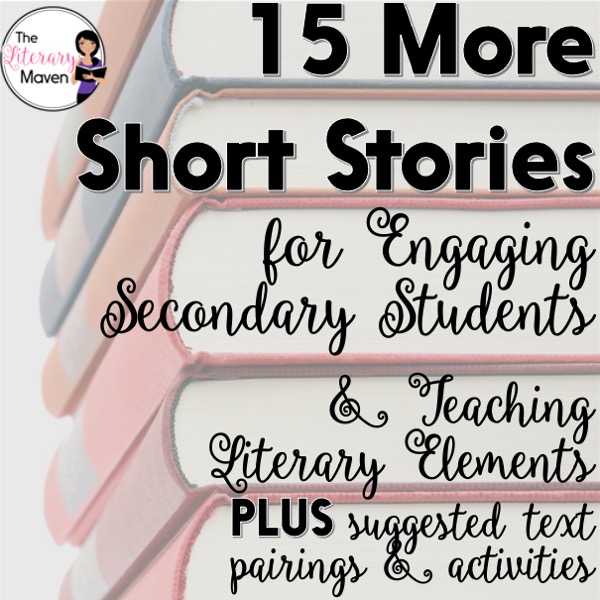Brynn Allison, The Literary Maven & Kristy, 2 Peas and a Dog host #2ndaryELA on Twitter every Tuesday evening from 8 - 8:30 PM EST. #2ndaryELA is a weekly chat for secondary English Language Arts teachers focused on a topic. Every Sunday, we post the topic and questions on our blogs to allow you to prepare for the upcoming Tuesday evening's chat. Thank you to everyone who joined us last school year and we hope that you will join us again.
The Format:
8:00 Intros: What and where do you teach? Include a link to your blog if you have one. #2ndaryELA
8:05 Q1: Are you responsible for designing your curriculum or are you given a prescribed curriculum to follow? Explain. #2ndaryELA
8:10 Q2: What are the challenges of designing your own curriculum or having to follow a prescribed curriculum? #2ndaryELA
8:15 Q3: What are the rewards of designing your own curriculum or having to follow a prescribed curriculum? #2ndaryELA
8:20 Q4: Describe your approach to planning a unit within your curriculum. #2ndaryELA
8:25 Q5: What advice would you give to teachers struggling to plan a unit or an entire curriculum? #2ndaryELA
Looking for the recap? Click on the image below.
New in 2016 is our 2ndaryELA Facebook group, which we would love to have you join even if you aren't on Twitter. 2ndaryELA is a group of middle and high school English Language Arts teachers looking to share ideas and best practices. This group is an extension of our Twitter chat and a place for collaboration, questions, and encouragement. Feel free to post teaching ideas, success stories, resource links, photos, etc. that will enhance our instruction.
On Tuesday, August 2, our #2ndaryELA chat will focus on curriculum & unit planning.
8:00 Intros: What and where do you teach? Include a link to your blog if you have one. #2ndaryELA
8:05 Q1: Are you responsible for designing your curriculum or are you given a prescribed curriculum to follow? Explain. #2ndaryELA
8:10 Q2: What are the challenges of designing your own curriculum or having to follow a prescribed curriculum? #2ndaryELA
8:15 Q3: What are the rewards of designing your own curriculum or having to follow a prescribed curriculum? #2ndaryELA
8:20 Q4: Describe your approach to planning a unit within your curriculum. #2ndaryELA
8:25 Q5: What advice would you give to teachers struggling to plan a unit or an entire curriculum? #2ndaryELA
The Directions:
1. Log into Twitter on Tuesday from 8-8:30 PM EST.
2. Search for tweets with the hashtag #2ndaryELA in the search bar. Make sure to click “All tweets.”
3. Introductions are for the first 5 minutes.
4. Starting at 8:05 (@literarymaven or @2peasandadog) will post questions every 5 minutes using the format Q1, Q2, Q3, etc. and the hashtag #2ndaryELA.
5. Respond to questions using the format A1, A2, A3, etc. with #2ndaryELA.
6. Follow any teachers responding and who are also using #2ndaryELA.
7. Like and respond to other teachers' tweets.
New to chats? Here are the rules:
1. Stay on topic & stay positive!
2. Please do not post or promote paid products unless specifically asked.
3. If you arrive late, try to look through other posts before beginning.
4. Feel free to just read, like, and/or retweet.
5. Always use our hashtag #2ndaryELA, including in your replies to others.
6. Make sure your twitter feed is set to public. (Also keep in mind that Twitter is completely public – that means students, parents, and administrators can and will read what you tweet.)
1. Log into Twitter on Tuesday from 8-8:30 PM EST.
2. Search for tweets with the hashtag #2ndaryELA in the search bar. Make sure to click “All tweets.”
3. Introductions are for the first 5 minutes.
4. Starting at 8:05 (@literarymaven or @2peasandadog) will post questions every 5 minutes using the format Q1, Q2, Q3, etc. and the hashtag #2ndaryELA.
5. Respond to questions using the format A1, A2, A3, etc. with #2ndaryELA.
6. Follow any teachers responding and who are also using #2ndaryELA.
7. Like and respond to other teachers' tweets.
You can schedule your responses to the questions ahead of time using a scheduler like TweetDeck or HootSuite (but don't forget to use A1, A2, etc. and #2ndaryELA). Links are encouraged, so be sure to use a link shortener like tinyurl, bitly, goo.gl or ow.ly Just visit one of those links and paste your long link to shorten it for Twitter. Using images is also encouraged when relevant.
New to chats? Here are the rules:
1. Stay on topic & stay positive!
2. Please do not post or promote paid products unless specifically asked.
3. If you arrive late, try to look through other posts before beginning.
4. Feel free to just read, like, and/or retweet.
5. Always use our hashtag #2ndaryELA, including in your replies to others.
6. Make sure your twitter feed is set to public. (Also keep in mind that Twitter is completely public – that means students, parents, and administrators can and will read what you tweet.)
Be sure to spread the word to any teacher friends who might be interested in joining us as well. We look forward to chatting with you Tuesday evening and in our 2ndaryELA Facebook group!
Get caught up on past chats here:
Get caught up on past chats here:



















